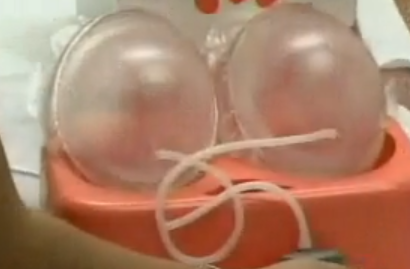Can Blindness Occur After Blepharoplasty?
Losing one's eye sight would be the most devastating complication after a blepharoplasty procedure for both the patient and the surgeon. Fortunately, blindness after an eyelid procedure rarely occurs (1 in 10,000 cases.) Before one undergoes an eyelid procedure, one should be cognizant of its potential complications, such as blindness. It is also very important to recognize the symptoms of an impending visual loss after a blepharoplasty procedure so that your plastic surgeon will be able to address this problem in a timely manner.
Fast Facts about Blindness after Blepharoplasty
Symptoms to Look for an Impending Visual Loss after a Blepharoplasty
Reference:
Hass AN, Penne RB, Stefanyszyn MA, Flanagan JC.
Incidence of postblepharoplasty orbital hemorrhage
and associated visual loss. Ophthal Plast Reconstr Surg
2004;20:426-432
Lelli GJ, Lisman RD. Blepharoplasty complications. Plast
Reconstr Surg 2010;125:1007
Mejia, Ergo and Foad Nahai. Visual Loss After Blepharoplasty: Incidence, Management, and Preventive Measures. Aesthetic Surgery Journal. January 2011;31(1): 21-29
Wolfort F, Vaughan T, Wolfort S, Nevarre D. Retrobulbar hematoma and blepharoplasty. Plast Reconstr Surg
1999;104:2154
Losing one's eye sight would be the most devastating complication after a blepharoplasty procedure for both the patient and the surgeon. Fortunately, blindness after an eyelid procedure rarely occurs (1 in 10,000 cases.) Before one undergoes an eyelid procedure, one should be cognizant of its potential complications, such as blindness. It is also very important to recognize the symptoms of an impending visual loss after a blepharoplasty procedure so that your plastic surgeon will be able to address this problem in a timely manner.
Fast Facts about Blindness after Blepharoplasty
- Permanent visual loss after blepharoplasty was estimated to occur in 1 in 30,000 in a new study.
- Temporary visual loss after blepharoplasty was estimated to occur in 1 in 50,000.
- Majority of patients developed symptoms within 24 hrs of the procedure.
- History of hypertension is the most common risk factor associated with blindness after a blepharoplasty procedure.
- Postoperative vomiting and a history of vascular disease occured more frequently in patients who developed permanent visual loss.
- Most common cause of blindness after blepharoplasty is retrobulbar hemorrhage (bleeding behind the eyeball).
 |
| The Blind Beggar by Jules Bastien-Lepage (File courtesy of Wikimedia Commons) |
- Severe pain (41% of patients)
- Pressure sensation (36% of patients)
- Blurred vision (not common)
Preventive Measures to Reduce the Risk of Vision Loss after Eyelid Surgery
- Good control of high blood pressure before surgery
- Minimize postoperative nausea and vomiting
- Minimize physical activity after surgery
- Any medication that can increase bleeding, such as aspirin, ibuprofen, or certain supplements like garlic pills, gingko biloba, vitamin E, omega-3 fatty acids, should be suspended two weeks before surgery and should not be taken for at least one week after surgery.
It behooves the astute plastic surgeon, as well as the educated patient, to be aware of this potential complication. It is imperative for one to recognize the symptoms of an impending visual loss after an eyelid procedure so that vision can be preserved. I recommend to always ask your plastic surgeon information about blepharoplasty prior to undergoing this procedure.
Reference:
Hass AN, Penne RB, Stefanyszyn MA, Flanagan JC.
Incidence of postblepharoplasty orbital hemorrhage
and associated visual loss. Ophthal Plast Reconstr Surg
2004;20:426-432
Lelli GJ, Lisman RD. Blepharoplasty complications. Plast
Reconstr Surg 2010;125:1007
Mejia, Ergo and Foad Nahai. Visual Loss After Blepharoplasty: Incidence, Management, and Preventive Measures. Aesthetic Surgery Journal. January 2011;31(1): 21-29
Wolfort F, Vaughan T, Wolfort S, Nevarre D. Retrobulbar hematoma and blepharoplasty. Plast Reconstr Surg
1999;104:2154










